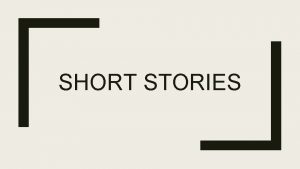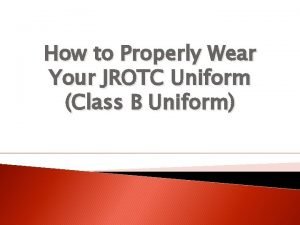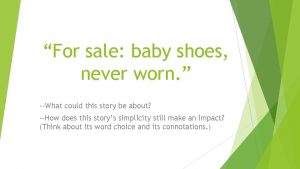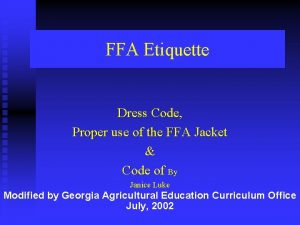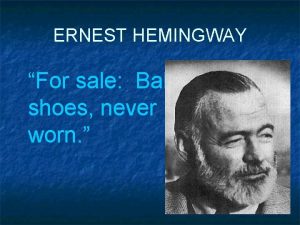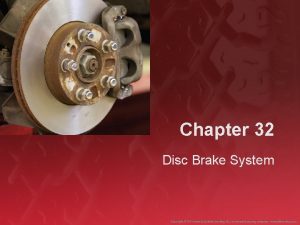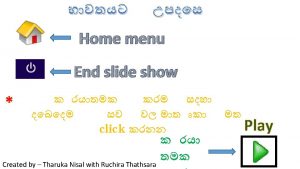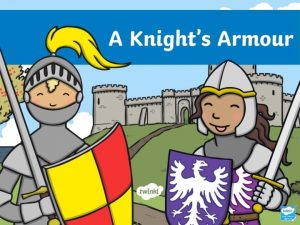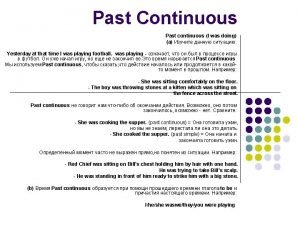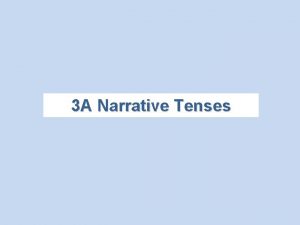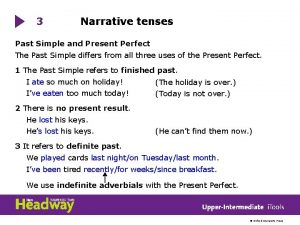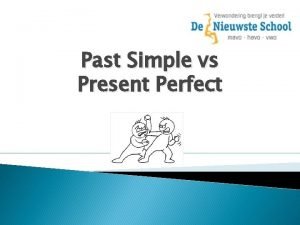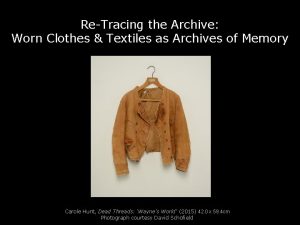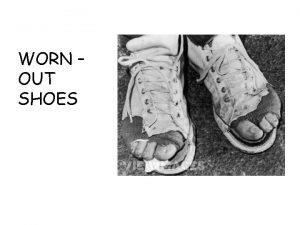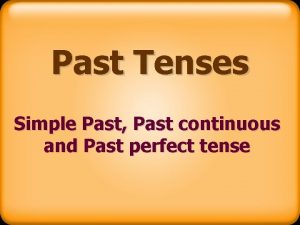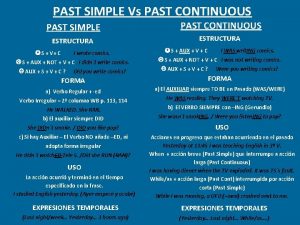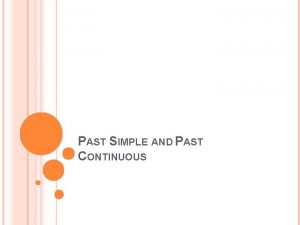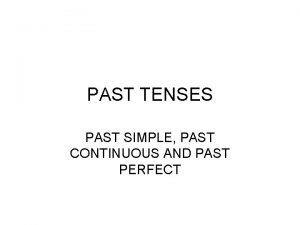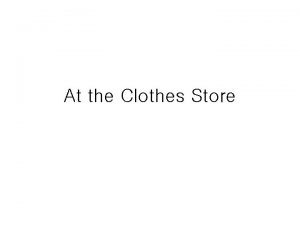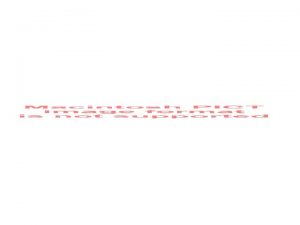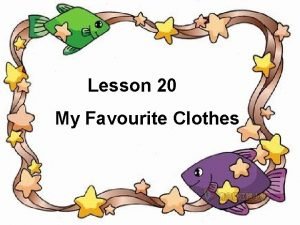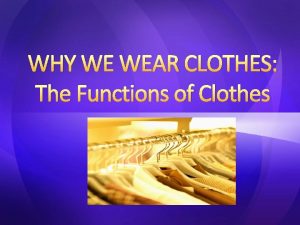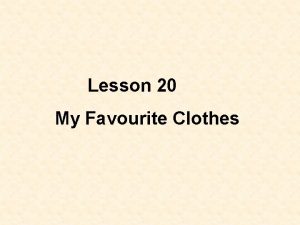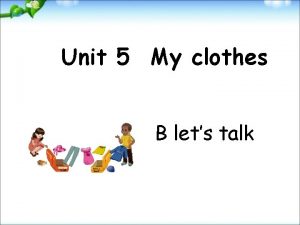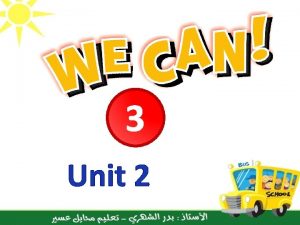CLOTHES IN THE PAST History The clothes worn


































- Slides: 34

CLOTHES IN THE PAST History

• The clothes worn by your grandparents when they were your age were different from the clothes you wear today. When your grandparents were young, many of the fabrics now used to make clothes had not been invented. • Photographs from the past show adults dressed in more formal clothes. Men usually wore suits with waistcoats. They also wore hats outdoors. People liked to dress up for events like agricultural shows and race meetings.


• Children's clothes in the early twentieth century were also very different from those you wear today. Boys wore short trousers and in winter they wore overcoats. Girls wore dresses, often with cardigans or jumpers over them. Boys did not wear long trousers until they were teenagers, and girls did not wear trousers at all. In winter, girls often wore woollen tights and socks to keep warm.


• Sportswear was very different in the past. It was usually made from white cotton. The skirts and shorts were longer and looser than the type of sportswear you have today.


• In the first half of the twentieth century, clothes were made mostly from natural fibres like wool, cotton, linen and silk. Man-made fabrics for leisure wear and sportswear, like T-shirts, hoodies and tracksuits did not come into their own until the 1960 s. The arrival of new synthetic fabrics like nylon, acrylic and lycra led to the manufacture of more casual clothes and sportswear.

• In our grandparents' time, children wore clothes in the same style as adults. • Boys wore a shirt and tie. They wore short trousers. • Girls wore dresses and shirts.

FARMING FAMILY 1947

THEY ALL WORE WARM WOOLLEN OVERCOATS AND CAPS FOR OUTDOORS IN COLD WEATHER.

• Our grandparents' clothes were made in natural materials like wool and cotton. Sometimes their clothes were made at home or in the local dressmakers. They were expensive to buy or make. • Clothes were often passed down from older brothers or sisters or cousins. Often, their mammies fixed the holes and tears that playing and working made in trousers and skirts.

• Now, clothes are made in factories. Often these factories are in China or India. • New man-made materials like polyester are used. They are cheaper and new clothes are bought much more often. • When clothes get too small they are often sent to a charity shop or to a Bring centre where they can be reused.


• Fill in the gaps

• When our parents were young, children began to wear more casual clothes. They still dressed in similar styles of clothes to adults. • Now children have their own style of clothes. They wear different clothes for different activities. Modern clothes are bright and comfortable.



• When our grandparents went to school, many children did not wear school uniforms. Instead they wore their own clothes to school every day. Boys wore short trousers with braces and a shirt. Girls wore a skirt or a dress with a blouse. Both boys and girls wore woolly jumpers or cardigans in the winter.


• That was a photograph of pupils from a National School in County Roscommon. It was taken in 1949. What are some boys at the front wearing on their feet? What are the girls wearing in their hair? What ages do you think these children were? Do you think the clothes they are wearing are nice? Do you think school would have been much harder back then? • Most school children wear a uniform to show that they belong to the same school. School uniforms come in all different styles and colours. Most school uniforms have a shirt, a tie and a jumper or a cardigan.


• This old photograph shows young boys running home from school in their bare feet. Long ago children often went to school in the summertime with no shoes on. In winter, children wore woolly knee socks with shoes or boots. Look at the photo. • What time of the year was it? Would you think their clothes was suitable for the time of year? What are some of the boys carrying? Are their schoolbags different to yours? How do you think these boys

GRANDPARENTS CLOTHES • When our grandparents were young most people did not have as much money as they have today. • People did not shop for clothes often as we do today. • Many children wore clothes that were handed down from older brothers, sisters or cousins. • Clothes were usually bought in the local drapery shop or at a market or fair. • Sometimes they were hand-made at home.


• When our grandparents were young most places had a local dressmaker, tailor and shoemaker. • Tailors and shoemakers, like the woman in this photograph, would make clothing and shoes from local materials for small amounts of money. What do you think this woman is making? Is it a shoe or a scarf?

MAKING CLOTHES AT HOME • Socks and jumpers were often hand-knitted in the home by the mammy or the granny of the family. Knitting, sewing and other crafts, such as crochet, were also used to make clothing for babies and toddlers. • Some homes still had a spinning wheel like this one. It was used for turning a sheep's fleece into long threads of wool.


SHOPPING AT THE FAIR DAY • Long ago some people bought their clothes at a fair day. This was a day when animals or farm crops were sold in a town. • The fair day was a very important day for both the people of the countryside and the people of the town. Everyone enjoyed selling and buying all sorts of things at the fairs. Many people bought new or second-hand clothes at stalls at the markets.


SHOPPING IN THE CITY • At special times, our grandparents might have visited the nearest big town or city to do some shopping. • The shops in the big towns sold wonderful items such as good shoes and brightly coloured coats. It was a very special treat to go shopping in the city.



GRAFTON STREET SHOPPING • Did you see the large blinds over the shop windows? They are called awnings. In the past awnings were used to stop the sun damaging the items in the shop windows.
 For sale baby shoes never worn characters
For sale baby shoes never worn characters Female jrotc uniform class b
Female jrotc uniform class b For sale baby shoes never worn full story
For sale baby shoes never worn full story How should the ffa jacket always be worn
How should the ffa jacket always be worn For sale baby shoes never worn ernest hemingway
For sale baby shoes never worn ernest hemingway Matthew 11 28 the message
Matthew 11 28 the message Worn square cut seal
Worn square cut seal Nisal thathsara
Nisal thathsara For sale baby shoes never worn
For sale baby shoes never worn Metal gloves worn by knights
Metal gloves worn by knights Past perfect and past progressive
Past perfect and past progressive Cuando usar past perfect simple y continuous
Cuando usar past perfect simple y continuous Past simple past continuous past perfect timeline
Past simple past continuous past perfect timeline Past perfect continuous past continuous
Past perfect continuous past continuous Past simple past continuous past perfect таблица
Past simple past continuous past perfect таблица Narrative tenses past simple past continuous
Narrative tenses past simple past continuous Past simple i past continuous
Past simple i past continuous Past simple past continuous present perfect
Past simple past continuous present perfect Narrative tenses past simple
Narrative tenses past simple Past perfect past simple past continuous
Past perfect past simple past continuous History also history physical
History also history physical Hình ảnh bộ gõ cơ thể búng tay
Hình ảnh bộ gõ cơ thể búng tay Slidetodoc
Slidetodoc Bổ thể
Bổ thể Tỉ lệ cơ thể trẻ em
Tỉ lệ cơ thể trẻ em Gấu đi như thế nào
Gấu đi như thế nào Tư thế worms-breton
Tư thế worms-breton Chúa yêu trần thế alleluia
Chúa yêu trần thế alleluia Môn thể thao bắt đầu bằng từ chạy
Môn thể thao bắt đầu bằng từ chạy Thế nào là hệ số cao nhất
Thế nào là hệ số cao nhất Các châu lục và đại dương trên thế giới
Các châu lục và đại dương trên thế giới Công thức tính thế năng
Công thức tính thế năng Trời xanh đây là của chúng ta thể thơ
Trời xanh đây là của chúng ta thể thơ Mật thư tọa độ 5x5
Mật thư tọa độ 5x5 Phép trừ bù
Phép trừ bù
